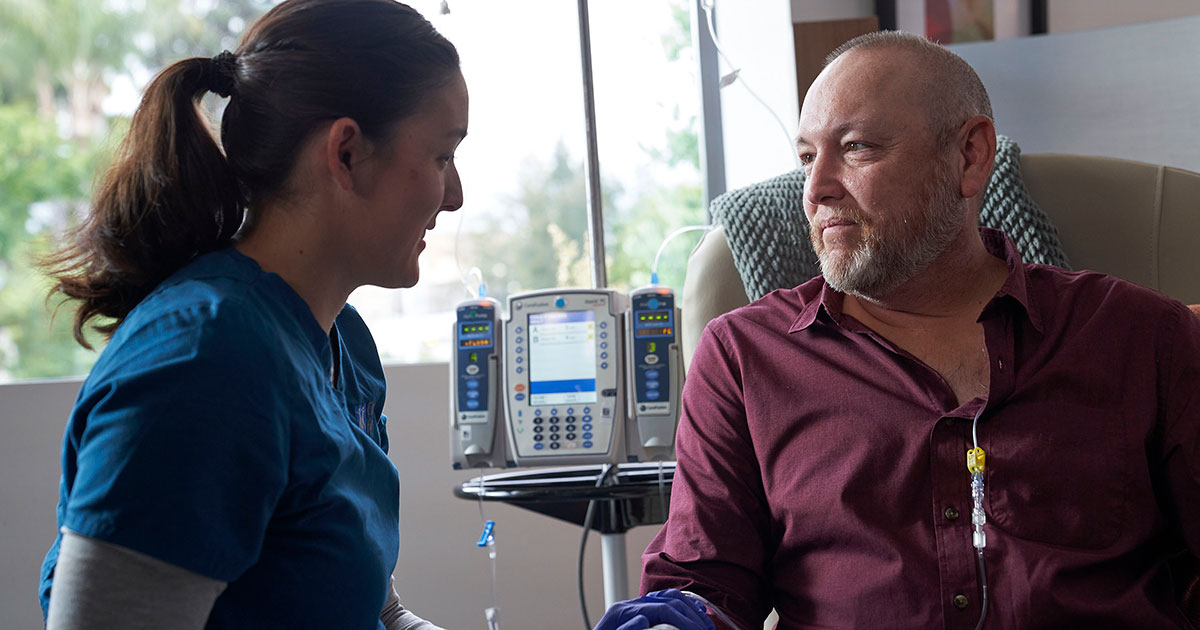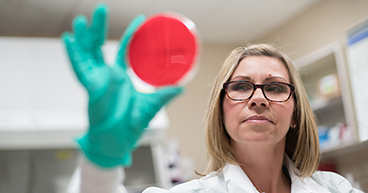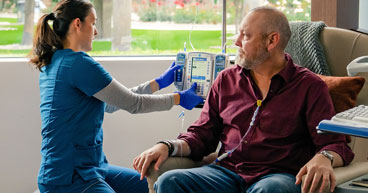
Cancer is a complex disease, but the goal of any doctor treating a patient with the disease is simple: Use any and all therapies available to produce the best outcome. That often includes treatments called neoadjuvant and adjuvant therapies.
“As a patient, you want to know that we’re doing everything we can to control the cancer—to get rid of it and to decrease the odds of it coming back,” says Kevin King, MD, Assistant Clinical Professor of Radiation Oncology at City of Hope® Cancer Center Chicago.
Most of the time, neoadjuvant and adjuvant therapies refer to chemotherapy and radiation therapy, but they can refer to other forms of treatment, too, like hormone therapy and immunotherapy.
In this article, we’ll explore:
- Adjuvant vs. neoadjuvant therapy
- Neoadjuvant chemotherapy
- Adjuvant chemotherapy
- How neoadjuvant vs. adjuvant therapy is chosen
If you’ve been diagnosed with cancer and are interested in a second opinion on your diagnosis and treatment plan, call us or chat online with a member of our team.
Adjuvant vs. neoadjuvant therapy
Adjuvant and neoadjuvant therapies are treatments delivered before or after the primary treatment—in most cases, surgery—to help increase its chance of success and decrease the risk of cancer recurrence.
“From a 1,000-foot level, it’s really just about timing,” Dr. King says. “Neo means before and adjuvant means something additional.”
- Neoadjuvant therapy is given to a patient before surgery to help shrink a tumor or stop disease spread to optimize the main treatment’s success rate and, if possible, make it less invasive.
- Adjuvant therapy is delivered after surgery to kill any remaining cancer cells in the area and lower the risk of the cancer coming back.
“Think of the surgeon as the gardener who comes in and pulls out the weeds but also tells you to use a little bit of weed killer in the area because there’s a chance a weed may come back,” Dr. King says.
In this scenario, radiation therapy is often the weed killer. Chemotherapy can be thought of as a whole-yard fertilizer to make sure that there aren’t any weeds hiding in the backyard that we can’t see, yet either.
“The surgeon will go in and actually remove the tumor,” he says, “but because countless studies have found that adding radiation afterward can kill microscopic disease that may be left over after surgery, we take that additional step, as well. All cancer needs is one cell, unfortunately.”
Schedules for adjuvant and neoadjuvant therapies can vary, but chemotherapy, for instance, is typically given in two- to three-week cycles.
Neoadjuvant chemotherapy
Most of the time, neoadjuvant chemotherapy treatments are planned as early as possible after diagnosis to stop cancer from spreading and, if possible, make tumors smaller.
“We often give a form of therapy before surgery to reduce the size of the tumor or make it more accessible for the surgeon,” Dr. King says.
A patient’s care team also uses a patient’s response to the neoadjuvant chemotherapy treatments to determine how likely they’ll be to respond to the surgery itself. This is often employed in certain cases of rectal, breast and pancreatic cancers, for example, to identify the patients who will benefit the most from different types of surgery.
“That’s helpful because these surgeries can be intense for patients,” Dr. King says, “so, it’s good to get some clues in advance about how successful they may be.”
Adjuvant chemotherapy
The goal of adjuvant chemotherapy is to kill off any lingering cancer cells distant from the primary tumor to reduce the risk the cancer will come back. Sometimes cancer cells in the bloodstream or lymph nodes are missed by imaging tests, but if they aren’t treated, they may travel to a distant organ and form a new tumor.
Because chemotherapy is a systemic treatment, it is designed to destroy cancer cells throughout the body.
Your doctor may recommend adjuvant chemotherapy in certain situations, including if you have a type of cancer that has a high risk of recurrence, if the surgeon identified cancer cells in the lymph nodes during surgery and if your cancer has advanced.
How neoadjuvant vs. adjuvant therapy is chosen
No two cancers are alike, and researchers are discovering new information about individual cancer types every day. That includes which may benefit from neoadjuvant therapy, from adjuvant therapy—or, in some cases, from both.
“There are all sorts of cancer types that can benefit from adjuvant or neoadjuvant therapy, but it just depends on the specific cancer and the purpose of the treatment,” Dr. King says. “Neoadjuvant therapies are traditionally used to reduce or shrink a tumor before surgery and adjuvant therapies to kill any remaining cells left behind after surgery, yes. But if research has found that a cancer has certain features that make it more likely to come back, we may give a little bit of additional treatment to that area to make sure it doesn’t.”
Doctors often use research on individual cancer types to guide treatment. For example, many treatment plans for breast cancer include systemic therapies as a neoadjuvant and adjuvant approach, as well as radiation therapy as an adjuvant therapy. Similarly, for rectal cancer, treatment plans typically follow an approach called total neoadjuvant therapy, or TNT, which means several therapies are given upfront. “With rectal cancer, we’ve found that if you give chemotherapy and radiation prior to surgery, patients may have better outcomes,” Dr. King says.
Providers also use patient-specific factors, such as health and ability to tolerate additional therapies, to guide treatment, as well as the cancer’s specific biology, location and size, he adds. If a woman has a large breast tumor, for example, she may receive neoadjuvant therapy before a planned mastectomy to give the surgeon the opportunity to, hopefully, perform a less-invasive surgery, like breast-conserving surgery.
If you’ve been diagnosed with cancer and are interested in a second opinion on your diagnosis and treatment plan, call us or chat online with a member of our team.


